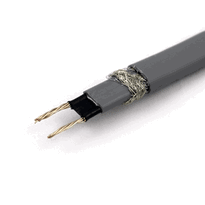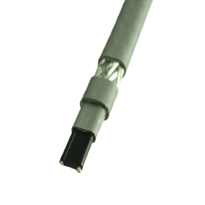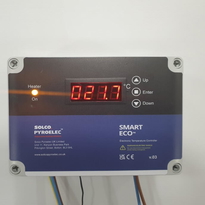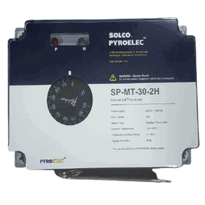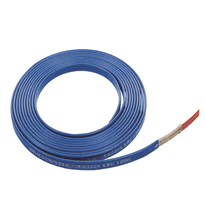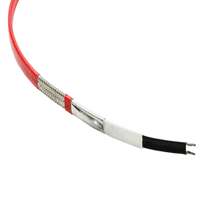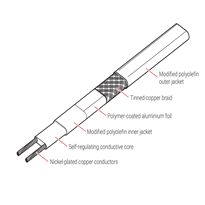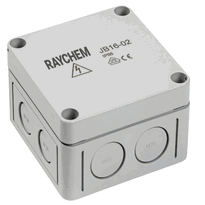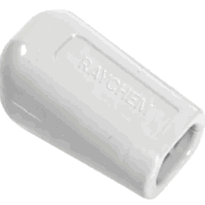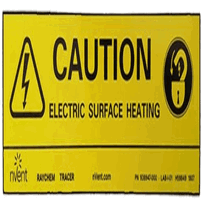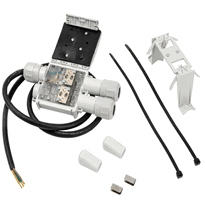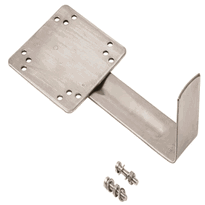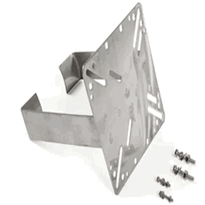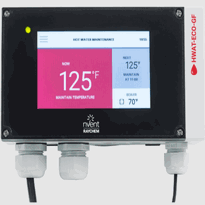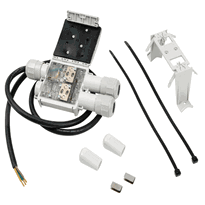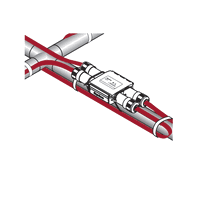Heat Trace for Pipes
Heat trace systems are electrical cables designed to maintain or raise the temperature of pipes, preventing freezing, condensation, and process interruptions. They come in various types, such as power-limiting, constant-wattage, and self-regulating cables, each suited for specific applications like pipelines or tanks. Proper installation involves selecting suitable cables, secure mounting, insulation, and connection kits, while monitoring controls ensure efficient performance. Continuing to explore these systems reveals detailed best practices and standards essential for safety and reliability.
Understanding Heat Trace Systems and Their Functionality
Heat trace systems are engineered to precisely control the temperature of pipes and tanks by converting electrical energy into heat via specialized heating cables. These cables utilize electrical resistance to produce heat directly on the surfaces they're affixed to, ensuring efficient transfer of warmth where it's most needed. Electrical resistance in these cables is the fundamental principle that allows for controlled and efficient heat generation. The heat generated within the cables offsets thermal losses, maintaining consistent temperatures crucial for process safety and operational efficiency. System components such as thermal insulation, temperature sensors, and control units work synergistically to optimize performance; sensors provide essential feedback, enabling control units to adjust heating output accordingly. Power distribution arrangements ensure dependable energy delivery, while insulation minimizes heat loss, contributing to energy efficiency. The uniform heat generation along the entire length of the cable guarantees continuous and controlled temperature regulation, preventing issues such as freezing or condensation that could compromise industrial infrastructure. Integrating jacket insulation or other thermal barriers with heat trace systems enhances their effectiveness and provides additional protection for critical infrastructure. This precise and reliable approach to temperature control supports the safe and effective operation of industrial processes, safeguarding infrastructure and ensuring operational continuity.
Types of Heat Trace Cables and Their Applications
Different types of heat trace cables are designed to meet specific industrial requirements, offering a range of features tailored to various applications.
1. Power-limiting cables regulate heat output by restricting power when temperatures rise, preventing overheating. They're ideal for freeze protection and chemical lines where moderate, uniform heat is required, ensuring safety and energy efficiency. They also help reduce energy consumption by limiting unnecessary heat generation.
2. Constant-wattage cables deliver a consistent heat output regardless of ambient conditions. These cables are primarily used for maintaining process temperatures in pipelines, tanks, or reactors.
However, careful design considerations are essential to prevent overheating and ensure optimal performance.
3. Self-regulating cables automatically adjust their heat output by changing electrical resistance in response to temperature fluctuations. They offer safe operation in hazardous environments and are suitable for pipe freeze protection and roof heating applications, providing energy-efficient and reliable heating.
4. Steam-traced systems utilize indirect heat transfer via steam piping, mainly in refineries and chemical plants. They're used to maintain high-temperature fluids such as heavy crude oil or viscous substances, ensuring process efficiency and safety.
Installation Components and Best Practices
Selecting and correctly installing the appropriate components for heat trace systems are crucial steps that directly impact their safety, efficiency, and longevity. Heat trace cables, including self-regulating, constant wattage, and power-limiting types, must be matched precisely to the specific heating requirements of the pipes. Using the correct power connection kits is essential for establishing reliable electrical interfaces, ensuring safety, and ensuring operational consistency. Cable termination kits protect the cable ends from moisture ingress and mechanical damage, thereby extending the lifespan of the system. Mounting accessories such as stainless steel straps or fiber-reinforced tape help secure the cables firmly along the pipe surfaces, maintaining stability and preventing movement under operational conditions. Following installation, insulation materials—chosen to minimize heat loss—and durable protective jacketing, such as metal sheathing, serve to shield components from external elements and environmental impacts. Connection kits, such as RayClic or WinterGard, facilitate quick and secure electrical connections, reducing installation time and potential errors. It is also important to consider proper grounding and electrical safety measures to prevent electrical hazards and ensure compliance with UK standards. Adherence to manufacturer guidance and a systematic planning approach ensure a safe, efficient installation that maximizes system performance and durability in line with UK standards.
Monitoring and Controlling Heat Trace Performance
Monitoring and controlling heat trace performance effectively relies on the integration of advanced technologies and systematic management practices to ensure safety, reliability, and efficiency. Proper deployment of sensors, controllers, and protective devices allows for precise temperature regulation and prompt fault detection. Components and types of electric heat trace systems incorporate various monitoring devices to track system status and performance. 1. Current transducers are utilized to identify open or short circuits as well as insulation faults, thereby preventing damage to equipment. 2. Electronic controllers equipped with RTD or thermocouple sensors adjust the heating output in accordance with real-time temperature data. 3. Wireless solutions enable remote transmission of measurements, simplifying oversight and management of large-scale systems. 4. Ground fault protection devices improve safety by detecting electrical hazards swiftly and accurately. These tools enable early fault detection, promote energy efficiency, and boost system reliability. They help maintain continuous heat tracing performance, minimize downtime, and uphold safety standards across various industrial settings. Energy efficiency can be further enhanced through regular system maintenance and calibration of sensors, ensuring optimal operation.
Industry Standards, Trends, and Advancements
Industry standards, trends, and advancements in heat trace systems are driven by the need to ensure safety, reliability, and regulatory compliance across a wide range of applications within the UK. Adherence to standards such as IEEE 515, CSA 22.2 No 130-03, and local regulations like the Institution of Engineering and Technology (IET) Wiring Regulations (BS 7671) helps safeguard system performance and operator safety. [Understanding and Selecting Heat Trace Systems Proper selection of systems aligned with these standards enhances operational efficiency and safety. Self-regulating heating cables undergo stringent testing, including dielectric withstand tests after impact, to guarantee durability and reliable operation in demanding environments. Current trends indicate a growing preference for energy-efficient cables that dynamically adjust their power output according to surface temperature, thereby reducing energy consumption and operational costs. Development of these cables also involves advanced insulation materials that improve durability and performance in harsh conditions. Installation flexibility is also increasing with the development of cables that are field-cuttable and compatible with crossover connections, simplifying installation in complex layouts. Advancements in materials, such as high-performance polymers resistant to chemicals and elevated temperatures, have significantly extended the lifespan and broadened the application scope of heat trace systems. Certification by appropriate authorities such as UL and CSA remains a vital requirement to ensure compliance with safety standards, while installation by fully qualified electricians ensures the integrity and safety of the system. Collectively, these standards, trends, and technological advancements provide a robust framework for effective freeze protection of pipelines and process safety management. Emphasizing regulatory compliance, energy efficiency, and material resilience continues to shape the evolving landscape of heat trace technology across the UK.
Conclusion
Effective heat trace systems are vital for preventing pipe freezing, maintaining process temperatures, and ensuring safety within UK industries. Selecting the appropriate cable types, following best practice installation procedures, and implementing continuous monitoring are key to optimizing system performance.
Industry standards provide essential guidelines to ensure safety, reliability, and efficiency in heat trace applications. A thorough understanding of these components and processes enables facilities to operate reliably while minimizing the risk of costly failures.
Implementing comprehensive control measures and staying informed about technological advancements further enhances the effectiveness and longevity of heat trace installations. Focusing on these aspects ensures robust, efficient, and safe pipe heating solutions tailored to the specific requirements of UK environments.








